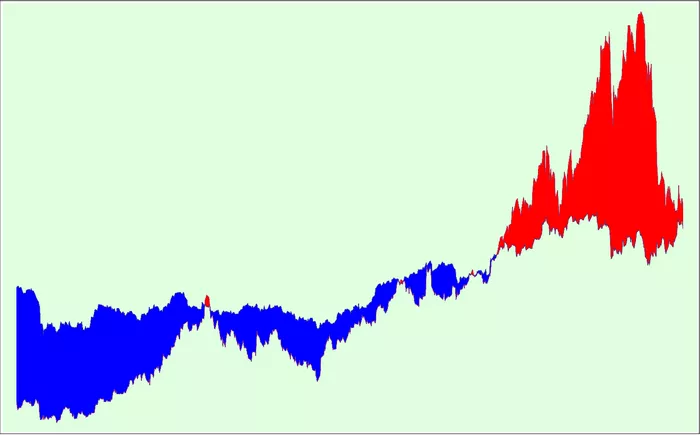Investing in stocks has long been a hallmark of wealth-building in the United States. However, the question of how many Americans actually own stocks is more complex than it might initially seem. The percentage of Americans who own stocks varies depending on various factors, such as income level, education, and age.
In this article, we will explore the current landscape of stock ownership in America, examining who owns stocks, how ownership has changed over time, and the key factors influencing stock market participation. Understanding this dynamic is crucial for anyone seeking insights into the broader financial health and wealth distribution of the American population.
Current Statistics on Stock Ownership
Recent data shows that the percentage of Americans who own stocks has fluctuated over the years, influenced by economic cycles, market conditions, and cultural shifts. According to the Federal Reserve’s Survey of Consumer Finances (SCF), a key source for understanding the financial well-being of U.S. households, stock ownership has remained a significant component of American financial behavior.
Percentage of Americans Who Own Stocks
As of 2022, about 58% of Americans reported owning stocks in some form, whether through individual stocks, mutual funds, or retirement accounts like 401(k)s and IRAs.
This percentage has been steadily increasing over the past few decades, driven by the expansion of retirement plans and the growth of index investing.
Direct vs. Indirect Ownership
When people refer to “owning stocks,” it’s important to distinguish between direct and indirect ownership:
Direct ownership means buying stocks on the open market, typically through brokerage accounts.
Indirect ownership includes stocks held through retirement accounts, mutual funds, and pension plans.
A significant portion of stock ownership in America comes from indirect ownership. Many Americans own stocks through 401(k)s, IRAs, or employer-sponsored pension plans, even if they don’t actively trade individual stocks. According to a 2021 report from the Investment Company Institute, approximately 40% of U.S. households owned mutual funds, which are often composed of stocks.
The Evolution of Stock Ownership in the U.S.
The landscape of stock ownership in America has evolved considerably over the years. In the mid-20th century, stock ownership was relatively rare, primarily concentrated among wealthier households. However, the growth of mutual funds, the rise of retirement accounts, and technological advances in online brokerage services have democratized access to the stock market.
Stock Ownership in the 1950s to 1970s
In the 1950s and 1960s, stock ownership in America was limited to affluent individuals. The stock market was seen as a space for wealthy investors, and the majority of Americans did not participate. This was partly due to the lack of widespread financial education and the barriers to entry for individual investors.
In the 1950s, only about 10% of American households owned stocks directly.
Wealthy families, institutional investors, and banks primarily controlled the stock market, with little emphasis on making stock ownership accessible to the general public.
The Rise of Mutual Funds and 401(k)s
The 1980s marked a significant shift in the way Americans approached stock ownership. The development of 401(k) plans and other retirement savings vehicles, along with the growth of mutual funds, played a crucial role in expanding stock ownership beyond the wealthy elite.
The 401(k) retirement plan, introduced in 1980, allowed employees to contribute pre-tax income into investment accounts, often with company matching. This opened up the stock market to a much broader range of individuals.
The mutual fund industry also saw explosive growth, as investors began pooling their money into professionally managed funds that could buy stocks on their behalf. This made it easier for people to gain exposure to stocks without directly purchasing individual shares.
By the early 1990s, stock ownership in America was on the rise, with approximately 33% of households reporting ownership in some form.
The Internet Age and Online Brokers
The 1990s and early 2000s saw the rise of online brokerages, which made trading stocks more accessible and affordable. Companies like E*TRADE, Charles Schwab, and TD Ameritrade lowered trading commissions, allowing even small investors to participate in the stock market. Online investing platforms made it easier for individuals to research, buy, and sell stocks, while also introducing new investment strategies, such as day trading.
By the 2000s, online brokers had dramatically increased the number of individual investors participating in the stock market.
The percentage of American households with stock ownership had increased to nearly 50% by 2001.
Key Demographics of Stock Ownership
Stock ownership in America is not uniform across all demographics. Factors like income, age, education, and race significantly impact who owns stocks and how much they own. Below, we break down these factors in greater detail.
1. Income Level
There is a clear correlation between income and stock ownership. Wealthier Americans are far more likely to own stocks, and they tend to own a greater quantity of stocks as well.
High-income households (earning $100,000 or more annually) are much more likely to own stocks than low-income households.
According to the Federal Reserve’s 2020 Survey of Consumer Finances, approximately 90% of households with incomes over $100,000 owned stocks in some form.
Conversely, only about 20% of households with incomes under $25,000 owned stocks.
This disparity underscores the wealth-building potential of stock ownership and highlights how the stock market can serve as a vehicle for wealth accumulation for the affluent, but remains less accessible to lower-income households.
2. Age Group
Age is another critical factor in determining stock ownership. Younger individuals are less likely to own stocks compared to older generations, although this trend has been changing in recent years due to the increasing popularity of online investment platforms and retirement accounts.
Older Americans (especially those in their 50s and 60s) tend to own stocks more than younger individuals, as they have had more time to build wealth through investments.
Millennials, typically in their 20s and 30s, are less likely to own stocks directly, but they are increasingly participating through retirement accounts like 401(k)s and IRAs.
Younger investors have also embraced robo-advisors and online platforms like Robinhood, which have made it easier for them to invest in the stock market with lower fees and minimal initial capital.
3. Education Level
Education plays a significant role in stock ownership. Individuals with higher levels of education are more likely to own stocks, as they tend to have greater financial literacy and higher incomes.
According to the National Bureau of Economic Research, individuals with a college degree are much more likely to own stocks than those without a degree.
The percentage of college-educated Americans who own stocks is about 60%, compared to just 30% among those with only a high school education.
This highlights the importance of financial education in fostering greater participation in the stock market.
4. Racial and Ethnic Disparities
Racial and ethnic disparities in stock ownership are also evident. White Americans are more likely to own stocks than Black or Hispanic Americans. This disparity can be attributed to factors such as income inequality, wealth gaps, and historical differences in access to financial education and investment opportunities.
According to a 2020 survey by the Federal Reserve, 59% of white households owned stocks, while only 33% of Black households and 40% of Hispanic households did.
Wealth disparities, lack of access to financial resources, and limited investment knowledge contribute to these gaps.
Efforts to address these disparities are ongoing, with more financial education initiatives aimed at increasing stock market participation in underserved communities.
How Stock Ownership Impacts Wealth and Financial Security
Ownership of stocks plays a significant role in building wealth in America. Stock ownership has been a key driver of wealth accumulation for many households, particularly those with access to retirement accounts and employer-sponsored plans.
Stock Market and Wealth Accumulation
Long-term growth: Over time, stocks have historically provided superior returns compared to other asset classes, such as bonds or savings accounts. Those who invested in the stock market early have seen their wealth grow significantly.
Retirement savings: For many Americans, 401(k) plans and IRAs are the primary vehicles for stock ownership, and stock market returns can dramatically affect the size of their retirement savings.
Challenges to Stock Ownership
While stock ownership can be a powerful tool for wealth creation, not all Americans are able to take full advantage of this opportunity. Low-income households, those without employer-sponsored retirement plans, and communities facing financial barriers may find it difficult to access the stock market or invest in it meaningfully.
Access to brokerage accounts: Some Americans still face barriers to accessing brokerage accounts or understanding how to invest.
Financial instability: Those living paycheck to paycheck may lack the resources to invest in stocks, even if they understand the benefits.
Conclusion
The percentage of Americans who own stocks has steadily increased over the past few decades, but significant disparities remain in terms of income, age, education, and race. As of the latest data, around 58% of Americans own stocks in some form, with indirect ownership through retirement accounts making up a large portion of this figure.
Stock ownership is not just a matter of wealth-building; it also plays a significant role in financial security, particularly for those who invest for retirement. However, challenges related to income inequality, financial literacy, and access to investment opportunities continue to limit stock ownership among certain groups in society.
Efforts to broaden financial education and improve access to investing tools are critical for ensuring that more Americans can benefit from the wealth-building potential of the stock market. As the market continues to evolve, understanding who participates, and why, will remain essential for policymakers and investors alike.
Related topics:

























